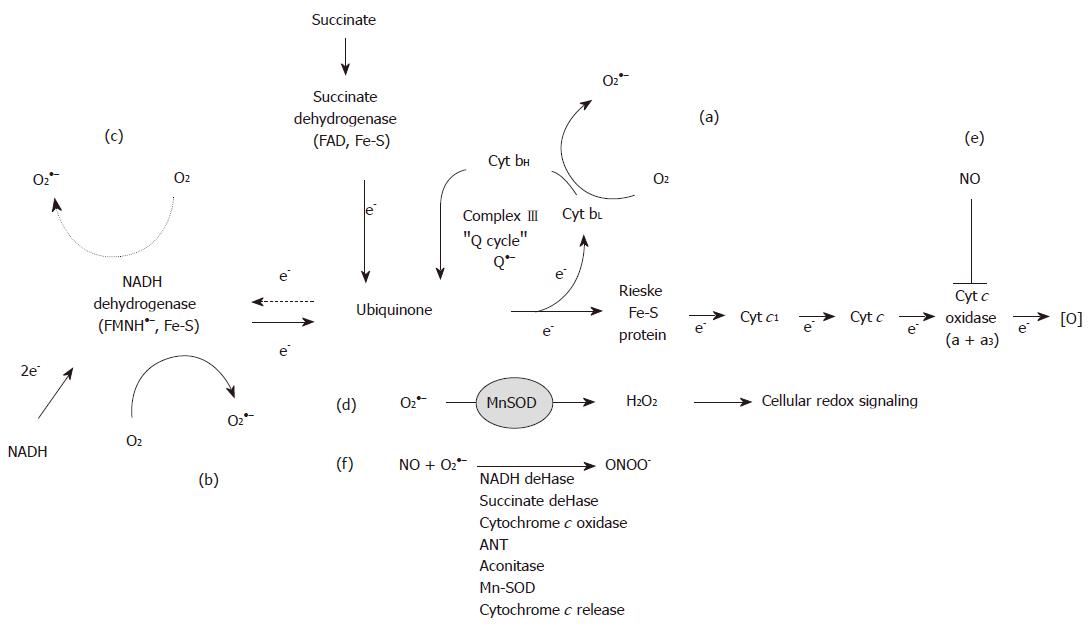Copyright
©2007 Baishideng Publishing Group Co.
World J Gastroenterol. Oct 7, 2007; 13(37): 4967-4973
Published online Oct 7, 2007. doi: 10.3748/wjg.v13.i37.4967
Published online Oct 7, 2007. doi: 10.3748/wjg.v13.i37.4967
Figure 1 Superoxide production and reactive nitrogen species reactions in mitochondria.
During electron transfer superoxide (O2●–) is generated within Complexes I (b, c) and III (a) due to the presence of stable semiquionine anion species. Solid arrows illustrate forward electron flow, whereas dashed arrows indicate reverse electron flow through Complex II to increase O2●– production in ComplexI(c). O2●– dismutation to hydrogen peroxide (H2O2) by manganese superoxide dismutase (MnSOD) affects cellular redox signaling pathways (d). Increased iNOS expression leads to diffusion of nitric oxide (NO) into mitochondria where it inhibits cytochrome c oxidase (e), which increases O2●– generation.
Figure 2 Overlapping alterations to the liver mitochondrial proteome contribute to the development of alcohol-induced liver disease.
This figure illustrates the concept that there is a unique mitochondrial sub-proteome that when altered by chronic alcohol mediated mtDNA/ribosome damage, increased ROS/RNS production, and energy deficits contribute to the development of alcohol hepatotoxicity. These alterations involve changes in both protein levels (panel A) and post-translational modifications (PTMs, panel B) to this susceptible population of mitochondrial proteins.
- Citation: Mantena SK, King AL, Andringa KK, Landar A, Darley-Usmar V, Bailey SM. Novel interactions of mitochondria and reactive oxygen/nitrogen species in alcohol mediated liver disease. World J Gastroenterol 2007; 13(37): 4967-4973
- URL: https://www.wjgnet.com/1007-9327/full/v13/i37/4967.htm
- DOI: https://dx.doi.org/10.3748/wjg.v13.i37.4967














